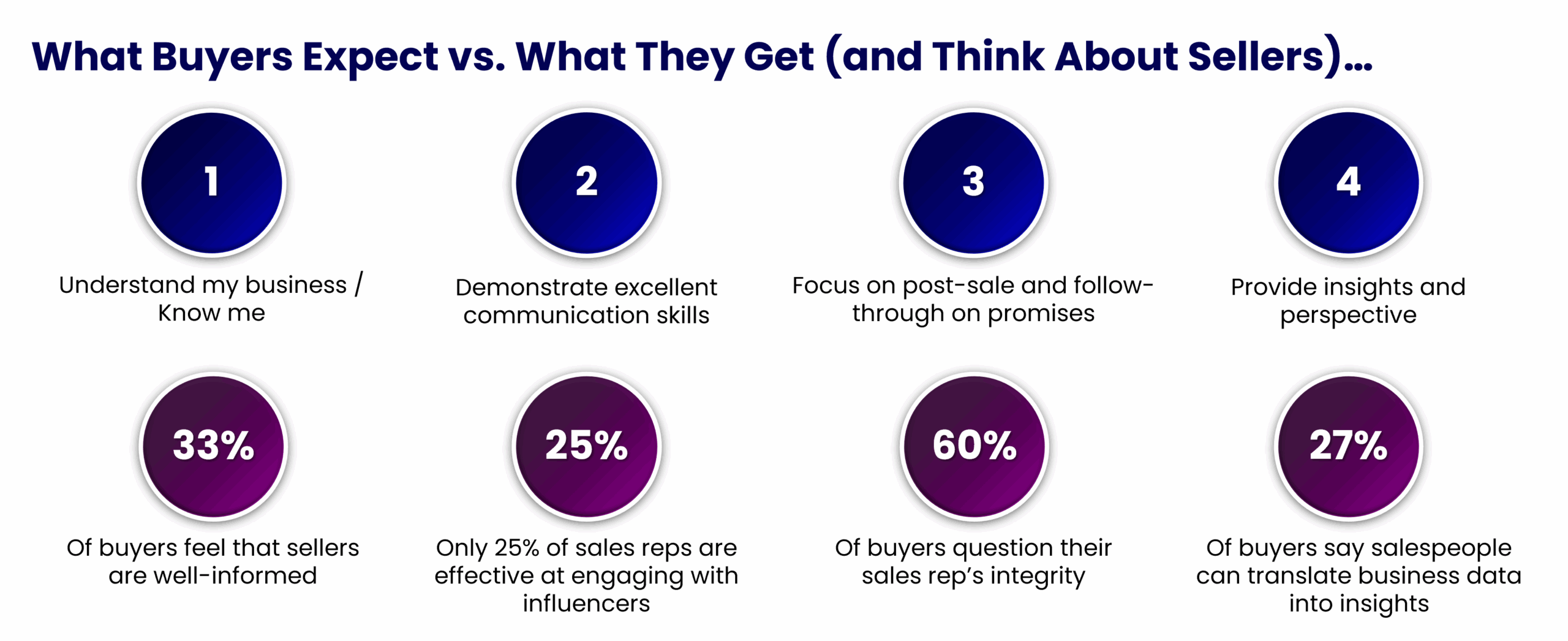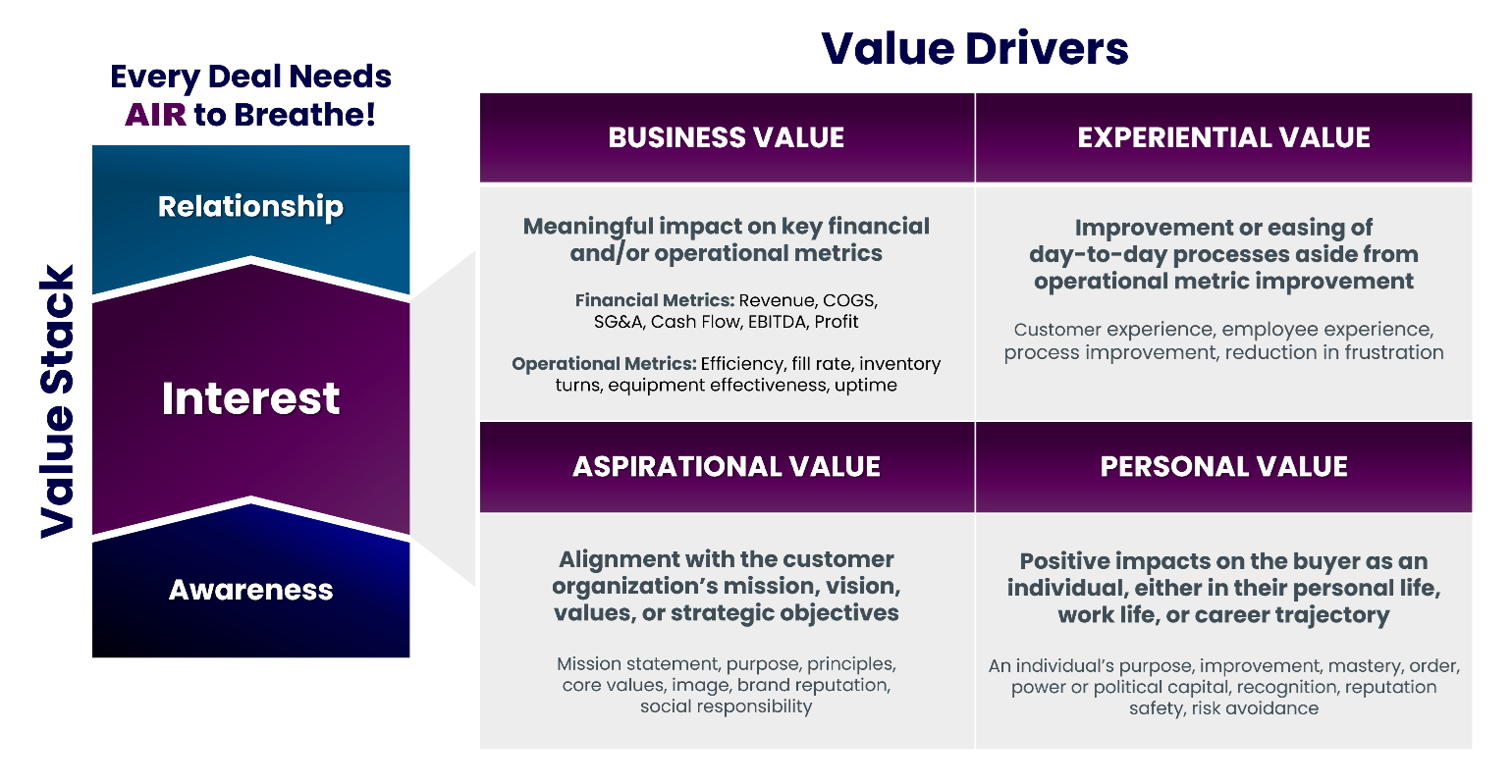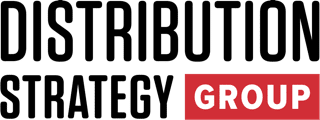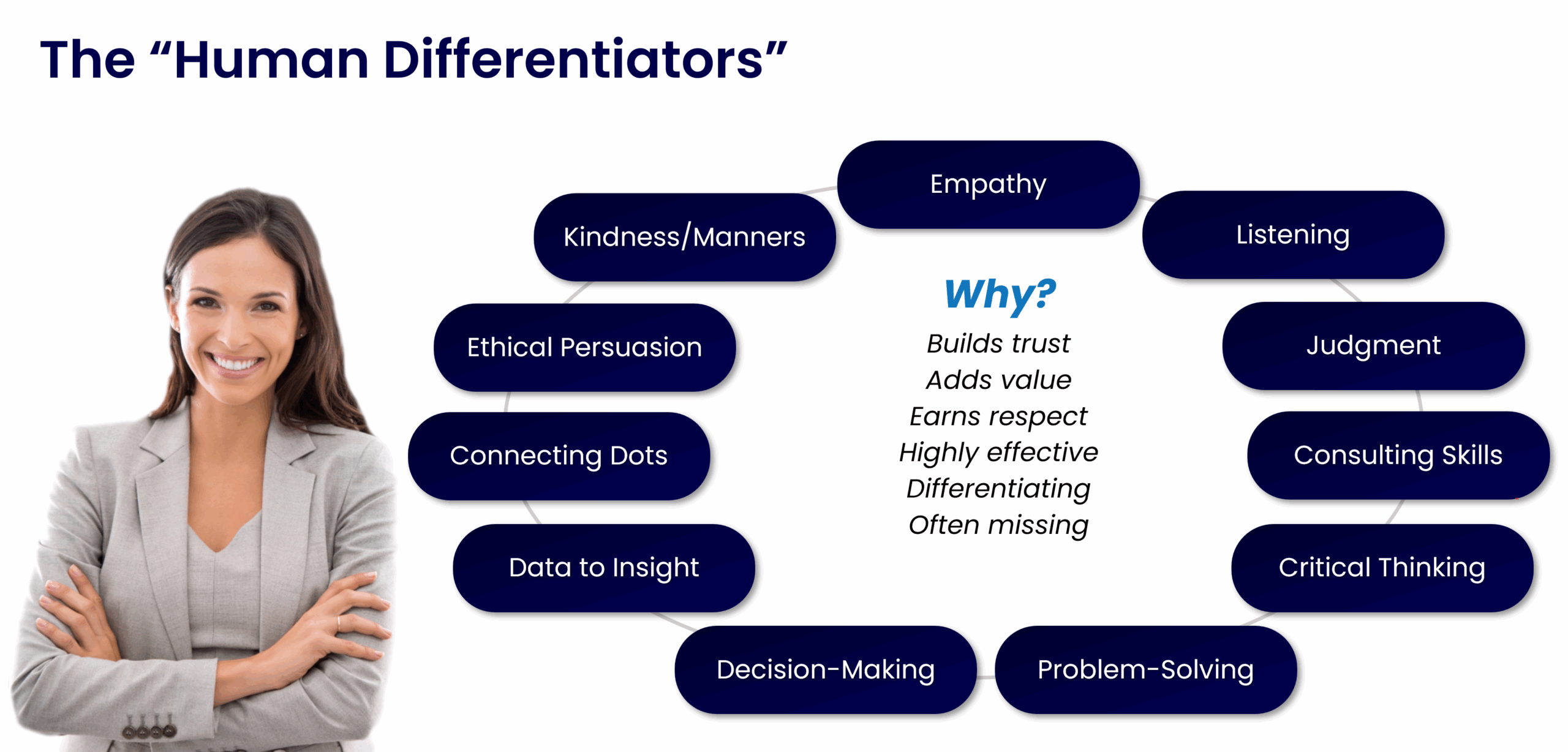Ask any distribution CEO or sales leader how their team is doing with relationships, and you’ll likely hear confident answers.
- “Our salespeople are great at building rapport.”
- “We’ve got strong connections with our accounts.”
- “Our account managers know their clients inside and out.”
The salespeople will, of course, confirm this. They don’t need help here.
But press a little further and ask how those relationships are built, what framework guides them, and how they’re coached or measured, and the confidence starts to crack.
Because the truth is, most salespeople don’t have a purposeful plan for building business relationships. They have instincts. They may have charm. They have access and some awareness. But they don’t have a system. And they don’t pressure test it.
And that’s a problem. Especially for a vertical industry where relationships are so important.
Peeling the Onion: What Sellers Say vs. What They Know
Let’s look at a few real-world scenarios that play out every day in sales organizations:
- Sales Manager: “How’s your relationship with ACME Industrial’s VP of Ops?”
- Account Manager: “Oh, we’re in a great spot. She really likes me.”
- Sales Manager: “Great. What are her top goals this quarter?”
- Account Manager: “Uh… I think she’s focused on efficiency.”
- Sales Manager: “What’s she struggling with?”
- Account Manager: “Not sure. She hasn’t said.”
- Sales Manager: “What’s her passion project right now?”
- Account Manager: “I’m sorry… no idea.”
Or this one:
- Sales Manager: “You said you’ve got a strong relationship with their CFO. What makes it strong?”
- Account Manager: “Oh, we’ve worked together for years now. He always takes my calls.”
- Sales Manager: “Does he see you as a strategic partner or a vendor?”
- Account Manager: “I think partner…?”
- Sales Manager: “What value have you added that he’s confirmed?”
- Account Manager: “Well… we’ve had some good conversations.”
These aren’t isolated cases. They’re symptoms of a broader issue: We’ve confused being likable or known with being valuable. We’ve mistaken access for trust. And we’ve assumed that relationships just “happen” if you’re good at talking with people or delivering product that they need.
These things are all pieces of the puzzle, but they are not the whole puzzle. Nor do they signify a deep, trusted relationship that differentiates you or shields your company from competitors.
The Relationship Gap: What Sellers Think vs. What Customers Feel

- A recent Gartner study found that only 23% of B2B buyers said sellers helped them navigate their buying journey. That’s not just a product problem—it’s a relationship problem.
- CSO Insights reported that only 33% of sales organizations have a formal relationship-building methodology (meaning, of course, that 67% do not).
- According to Dun & Bradstreet, “Relationships are the longest-standing, most proprietary differentiator for any company,” yet most organizations fail to observe changes in relationships until it’s too late.
- Strategic accounts represent a disproportionate share of revenue, yet 51% of companies that prioritize only spend when determining key accounts are less likely to see increased revenue. It’s about more than the dollars, by themselves.
We’ve spent decades training sellers about product knowledge and selling skills. But building strategic, durable relationships that can survive market cycles, leadership turnover, and changing buyer priorities? That has been left largely to chance. Some do excel. Many do not. And that isn’t a sound strategy.
The Case for Intentional Relationship Development
Here’s the paradox:
Relationships are known to be the most durable competitive advantage in sales, yet they’re often the least formally developed.
We train sellers on discovery. We train them in negotiation. We train how to resolve concerns. But when it comes to building deep trust, uncovering what truly drives a buyer, and becoming a strategic partner—we assume or hope that sellers will just figure it out.
That hope is expensive. It costs deals. It costs growth opportunities. And it costs influence, in the accounts that matter most.
The good news is that strategic relationship-building skills aren’t a mystery. They can be taught. They can be scaled across an organization. And they can be measured—if you apply the right framework and make them “how we do things around here.”
A Proven Framework for Lasting Relationships
In his book Business Relationships That Last, author, speaker, and relationship expert Ed Wallace lays out a structured, human-centered approach to transforming business contacts into enduring, high-performing relationships. It’s not about being charming. His model replaces “winging it” with intentionality.
Let’s explore some of the core principles.
Relational GPS®: Know What Drives Them
Every business relationship is powered by three things:
- Goals: What they’re trying to achieve professionally or personally.
- Passions: What energizes them—inside or outside of work.
- Struggles: The challenges they face that you might help alleviate.
Most sellers stop at surface-level goals. They know the KPIs, the budget cycles, and the org chart. But they don’t dig into what really matters to the person behind the title.
Relational GPS is about empathy, relevance, and value alignment. It’s the difference between selling to a role and partnering with a human.
Sidebar: Another alignment between what I teach and Ed’s principles is understanding, delivering, communicating, and confirming receipt of value from your customer’s perspective—which I call Value Drivers.

CIA: Build Trust That Sticks
Trust isn’t just a feeling. It’s a consistent pattern of behavior. Wallace’s CIA model breaks it down into three essential traits:
- Credibility: Demonstrated expertise and reliability.
- Integrity: Consistency in values and actions.
- Authenticity: Being genuine and transparent—no hidden agendas.
These qualities aren’t just nice-to-have moral virtues; they are competitive differentiators that determine whether a buyer listens to you or your competitor.
Sidebar: This is not something in Ed’s book, but I’ve always appreciated how this aligns with what I refer to as The Human Differentiators.
Worthy Intent: Lead With Other-Centric Purpose
This is the mindset shift that separates relational leaders from transactional ones. Worthy Intent means:
- Helpful: Approaching relationships with a sincere desire to help.
- Other-centric: Prioritizing the other person’s success, not just your own.
- Intentional/Mutual: Being intentional about creating mutual value.
In Modern Sales Foundations, I teach that “buyer-centric” means operating in your buyers’ and customers’ best interests. It’s what makes your actions feel trustworthy and your advice welcome. It’s part of what turns a transactional seller into a trusted partner.
The Relational Ladder: Move Up, Not Just In
Wallace introduces a five-step progression for deepening relationships:
- Establish Common Ground: Find shared interests or experiences.
- Display Worthy Intent: Show you’re invested in their success.
- Communicate Personal Value: Offer insights or help that matters.
- Elevate the Relationship: Move from vendor to trusted advisor.
- Partner for Success: Collaborate toward shared outcomes.
Each rung supports the next. Skip one and the relationship lacks stability. Climb them intentionally and you create something resilient.
Common Pitfalls in Relationship Building
Even with the best intentions, sellers often fall into traps that undermine their efforts to build strategic relationships. Here are some of the most common pitfalls:
- Mistaking Friendliness for Trust: Being likable is important, but it’s not the same as being trustworthy or delivering value. Trust is earned through consistent actions, showing worthy intent, and delivering value (from the customer’s perspective).
- Relying Solely on Product Knowledge: Knowing your product inside and out is essential, but it’s not enough to build a relationship. Sellers need to understand the buyer’s goals, passions, and struggles. Sidebar: I expand this to COIN-OP in Modern Sales Foundations (Challenges, Opportunities, Impacts, Needs, Outcomes, Priorities), but the concept is the same.
- Skipping Steps on the Relational Ladder: Trying to jump straight to “trusted advisor” without establishing common ground or demonstrating worthy intent can backfire.
- Focusing on Short-Term Gains: Building “relationships” with the sole aim of closing a deal (often referred to as “rapport”) can lead to transactional interactions that don’t foster long-term trust.
- Neglecting Follow-Up: Relationships require ongoing effort and attention. Failing to follow-up or follow-through after meetings or milestones can erode trust and credibility.
Weaving Relationship Principles into Workflow
To make relationship-building a core part of your sales strategy, integrate these principles into your team’s daily workflows.
Internal Meetings
- Pipeline Reviews: During pipeline reviews, assess the relationship part of the buyer landscape. Ask questions like: “What’s their GPS?” and “Where are we on the relational ladder?”
- Account Reviews: Use account reviews to evaluate the strength of relationships within strategic accounts. Identify gaps and opportunities to deepen connections.
Managing Opportunities
- Relationship Assessment: Incorporate relationship assessments into opportunity management. Evaluate the level of trust, credibility, and authenticity with key stakeholders.
- Buyer Landscape Analysis: Map out the buyer landscape to understand the dynamics of relationships within the account. Identify champions, coaches, detractors, and other influencers and their roles. This is something else we do in Modern Sales Foundations that I have seen make a significant difference in building effective account plans.

Strategic Account Plans
- Relationship Goals: Set specific relationship goals as part of strategic account plans. Define actions to build trust, uncover GPS, and climb the relational ladder.
- Coaching Cadence: Establish a coaching cadence to reinforce relationship-building skills. Schedule regular check-ins to review progress and provide guidance.
What Good Looks Like
To help sellers recognize when they’ve built truly strategic relationships, here’s a checklist of signals that indicate success:
- The buyer shares internal priorities and seeks advice beyond product scope.
- The relationship survives turnover, pricing pressure, and competitive noise.
- The seller is viewed as a trusted advisor, not just a vendor.
- The buyer proactively reaches out for insights or collaboration.
- The relationship drives mutual value and aligns with long-term goals.
Why This Matters for Sales Leaders
If you’re a CEO or head of sales, here’s the real question:
Are your sellers building relationships that survive turnover, pricing pressure, and competitive noise? Or are they just getting along with people who like them?
Strategic relationships aren’t just about access. They’re about insight. They’re about influence. They’re about being the person your buyer turns to when the stakes are high.
And that kind of relationship doesn’t happen by accident.
It happens when you teach it. Reinforce it. Coach it. Measure it. Ask about it.
Bringing It to Life: Coaching with Relational Concepts
Imagine a sales manager asking a rep not just “how’s the relationship?” but:
- “What’s their GPS?”
- “Where are you on the relational ladder?”
- “How are you demonstrating Worthy Intent?”
- “What’s the next step to elevate the relationship?”
Suddenly, relationship-building becomes a discipline—not a personality trait nor a guessing game.
And for enablement leaders, it opens a new frontier: relationship development as a skillset. Not just soft skills, but strategic soft skills.
Closing Thoughts
If you want your salespeople to build better business relationships, you must teach them how. Not just “be likable.” Not just “follow up.” Not just be friendly. Not just service accounts well. But how to build trust, uncover GPS, and climb the relational ladder—intentionally.
Ed Wallace’s principles give us the playbook. And with the right tools, we can turn relationship-building into a repeatable, scalable capability across the sales organization. As you endeavor to do this, keep these two axioms in mind:
- What gets measured gets done.
- What is asked about by leaders gets attention and focus.
I hope this helps you evaluate the level of relationship-building skill in your sales force and evolve it toward a true competitive advantage for your company.
Resources
Book
- Explore Ed’s book on Amazon. He has others, as well, including Fares to Friends, Creating Relational Capital, and his most recent, The Relationship Engine.
Course
- Explore the Relationship Quotient course, built in partnership with Ed Wallace. This course translates these principles into a practical, teachable system for sales teams. If you’re ready to close the relationship gaps that put your company at risk, this is another option.
Related Reading
- Relationship Selling May Be Dead, But Relationships in Selling Are Not
- The Combined Power of AI and Human Differentiators in Sales
- How to Navigate the Buyer Landscape
- Buyer Acumen is the Best GTM Foundation
Mike Kunkle is an internationally recognized expert on sales enablement, sales effectiveness, sales training, sales coaching, sales management, and sales transformations.
He’s spent over 30 years helping companies drive dramatic revenue growth through best-in-class enablement strategies and proven effective sales systems.
Mike is the founder of Transforming Sales Results, LLC where he designs sales training, delivers workshops, and helps clients improve sales results through a variety of sales effectiveness practices and advisory services.
He collaborated to develop SPARXiQ’s Modern Sales Foundations™ curriculum and authored their Sales Coaching Excellence™ and Sales Management Foundations™ courses.
Mike's book, The Building Blocks of Sales Enablement, is available on Amazon, with others coming soon in 2026, starting with The CoNavigator Method for B2B Selling.


